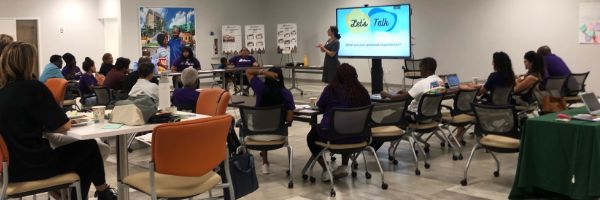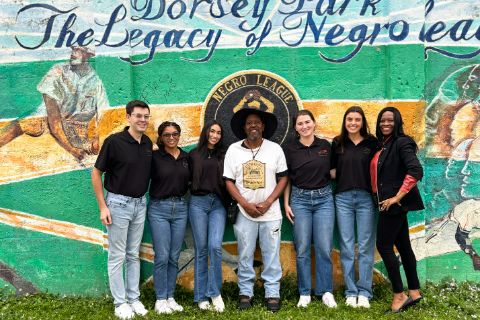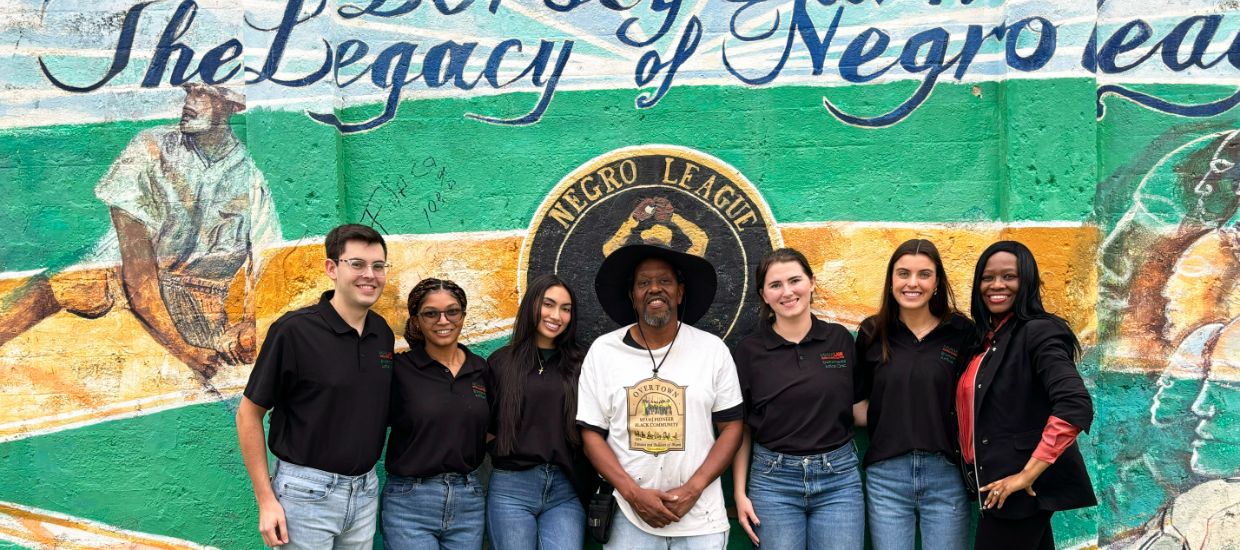The Climate Crisis
 (Pictured: Iqbal Ahmed, Consul General of the Bangladesh Consulate in Miami, describes the impact of the climate crisis on Bangladesh during his class with the EJC in March 2024.)
(Pictured: Iqbal Ahmed, Consul General of the Bangladesh Consulate in Miami, describes the impact of the climate crisis on Bangladesh during his class with the EJC in March 2024.)
Miami and South Florida are at the epicenter of the climate crisis. From drastic increases in summer heat, to rising sea levels and shifting development pressures, to discouragement of alternative or community-based energy, the challenges are urgent. Responding to the climate crisis and its immense effects on communities of color is of utmost significance and impact. Examples of our climate work include our heat justice team supporting protections for outdoor workers and our collaboration with Our Children’s Trust on a youth climate case in Miami-Dade County.
Pollution
Whether from industrial or municipal facilities, vehicles, or other sources, water, air, and toxic pollution that cause multiple health effects are omnipresent in communities of color. Redressing this pollution, from sources past and present, is critical to public health. An example of our pollution work is the Old Smokey case, seeking redress from the City of Miami for decades of toxic pollution from a waste incinerator the City operated in the historically-segregated community of West Coconut Grove.
The Built Environment
Wherever one looks in Miami, the negative impacts of the built environment on communities of color are apparent. An obvious example is the destruction of much of Overtown by I-95 and I-395, and the ongoing pollution and other impacts from these highways. Other forms of problematic and polluting infrastructure, from waste incinerators to industrial facilities, tend to be in or proposed in communities of color. Likewise, the parks and public amenities in Overtown and other minority communities tend to be more contaminated and of lesser quality. These impacts in turn affect housing quality and availability, with the added pressure of displacement as rising seas force development toward the higher ground that, until recently, has been where communities of color were segregated. An example of this work is our Overtown Parks team seeking to improve neighborhood public parks in collaboration with our partners in Overtown.
Communities and Partners

(
Pictured: Associate Director Abigail Fleming leads a public meeting.)
The Clinic uses data and screening tools, investigation, and lived experiences of our partners to ensure that its work remains focused on communities of color, such as Overtown, the West Grove, Opa-Locka, Miami Gardens, Allapattah, Liberty City, and the City of Riviera Beach. In pursuing its cases and campaigns, the Clinic employs community and movement lawyering principles and approaches, including community leadership, collaboration, integrated legal and political advocacy, and accountability to clients and communities.
The Clinic works closely with and relies on many partners in its work. These partners tend to be environmental, health, worker, and neighborhood organizations, though we also partner with governmental entities when our goals are aligned. Current partners include Everglades Law Center, Miami Waterkeeper, Earthjustice, Our Children’s Trust, Urban Health Partnerships, GRACE, WeCount!, and the Lakeview Area Neighborhood Association.





 (Pictured: Iqbal Ahmed, Consul General of the Bangladesh Consulate in Miami, describes the impact of the climate crisis on Bangladesh during his class with the EJC in March 2024.)
(Pictured: Iqbal Ahmed, Consul General of the Bangladesh Consulate in Miami, describes the impact of the climate crisis on Bangladesh during his class with the EJC in March 2024.) (Pictured: Associate Director Abigail Fleming leads a public meeting.)
(Pictured: Associate Director Abigail Fleming leads a public meeting.)